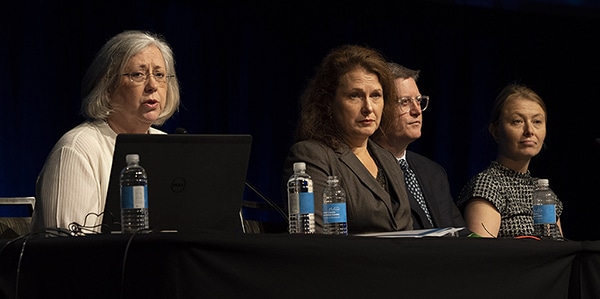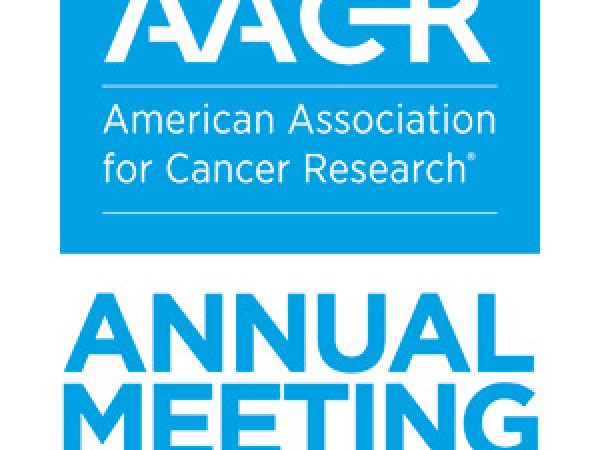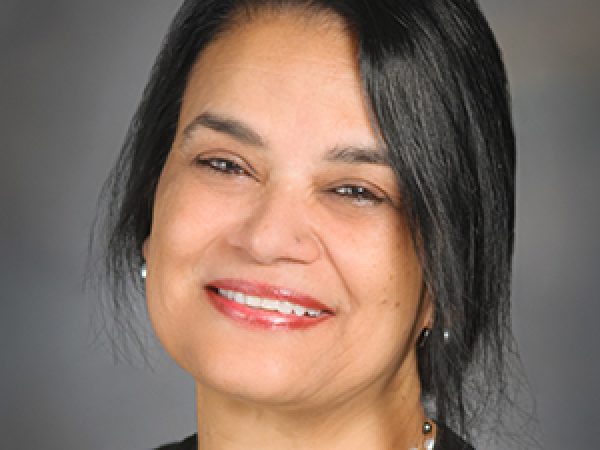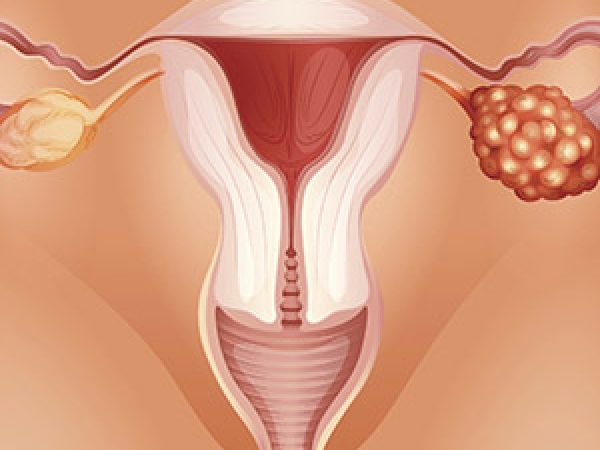AACR Annual Meeting 2023: Navigating the Challenges of Cancer Treatment During Pregnancy
Although not common, a cancer diagnosis during pregnancy or the onset of a pregnancy while a woman is receiving anticancer treatment poses unique challenges.
The Presidential Select Symposium at the AACR Annual Meeting 2023 was dedicated to the important theme of pregnancy and cancer. In her introductory remarks, AACR President Lisa M. Coussens, PhD, FAACR, said that the goal of this session was to educate patients, health care providers, and the public by presenting data-driven information on optimal patient-centered care, especially in light of the recent restrictions to abortion access.
Moderator and presenter Ann H. Partridge, MD, MPH, vice chair of medical oncology at Dana-Farber Cancer Institute and professor of medicine at Harvard Medical School, reviewed the current state of cancer care for pregnant women. She noted that the incidence of pregnancy-associated cancer in the U.S. is on the rise, due in part to a surge in the rates of early-onset cancer—which makes cancer a more common occurrence among women of reproductive age—and an increase in the average age of first-time mothers.

MD, MPH
“Approximately one in 1,000 pregnancies are complicated by cancer,” Partridge said, explaining that breast, thyroid, cervical, and ovarian cancers, as well as central nervous system cancers, Hodgkin lymphoma, and leukemia are the most common types diagnosed in pregnant women.
Treating patients with cancer during pregnancy comes with complex therapeutic and ethical challenges, Partridge noted. She added that a major problem is the scarcity of data from randomized studies to inform decisions. Most of the knowledge derives from retrospective analyses and case reports, which are subject to variable quality and bias.
“It often requires some compromise and modifying the standard diagnostic and treatment algorithms to achieve the most effective treatment for the mother’s cancer while minimizing the risks of toxicity to the fetus, which can be almost impossible in some settings,” Partridge said. In high-risk cases, extensive support by a multidisciplinary care team, including help navigating the legal aspects, should be available throughout the decision-making process, she said.
In addition to the patient’s preference, important considerations when evaluating the treatment options for pregnant women with cancer include the type and stage of cancer and how far along the pregnancy is.
The risk of miscarriage and defects to the developing fetus associated with systemic therapy is highest in the first eight weeks but persists throughout the pregnancy, Partridge explained. Chemotherapy is considered acceptable, with some exceptions, in the second and third trimesters.
Limited data are available for newer treatment types. Currently, providers make judicious use of some targeted therapies late in the pregnancy, while other types of targeted therapies are considered not safe or have not been studied enough. “Immunotherapy is an area of concern; we need to continue to collect data,” Partridge said. Surgery is possible throughout the entire pregnancy, and non-pelvic radiation can be considered in the first trimester.
Cancer therapy during pregnancy entails intensive prenatal monitoring, neonatal assessment, and long-term follow up of the baby to rule out toxicities, Partridge concluded.
Virginia F. Borges, MD, professor of medicine-medical oncology at University of Colorado Medicine, discussed the importance of reproductive rights for pregnant women facing cancer. She explained that abortion is part of the evidence-based care for these patients, and that between 9 and 28% of them choose to terminate the pregnancy. “These are difficult choices that need to be made at a difficult time,” Borges said.
In 2022, the U.S. Supreme Court decision on Dobbs v. Jackson Women’s Health Organization held that abortion is not a constitutional right, overruling previous decisions and attributing the authority to regulate abortion to individual states. Borges noted that many organizations, medical leaders, advocacy groups, and some scientific journals immediately reacted to this decision. The AACR released a statement expressing deep concern that the ruling and any future legislative actions by individual states might have harmful medical consequences for patients and could limit their access to equitable, quality health care.
Borges showed a snapshot of the present landscape of abortion laws in the U.S., ranging from complete bans to no restrictions. Based on available cancer statistics, she said, it can be estimated that approximately 100 pregnant women will face cancer in states with full bans on abortion this year, a number that might reach 1,500 if the current legislation trend on abortion persists.
The abortion bans include exceptions for medical emergencies in cases when interrupting the pregnancy is “necessary to preserve the woman from a serious risk of death or of substantial and irreversible physical impairment of a major bodily function.”
“This is tricky for our pregnant patients, for depending on their exact cancer scenario, the threat to their health or their life might not be seen as immediate,” Borges said. She added that other major aspects are not clearly defined, including who is responsible for making the decision of what constitutes an emergency, and over what timeline; and where the patient will undergo the procedure, if abortion is selected as the appropriate choice. In addition, if the patient has no access to abortion or decides against it, high-risk maternal fetal medical care might not be available in her community.
In a perspective article published in The New England Journal of Medicine, Borges and Nicole T. Christian, MD, concluded that the difficult decisions regarding a pregnant patient’s care should be made as part of a meaningful dialogue between the patient and the physician and not by the state. “Though our team is multidisciplinary, there is no role in it for the government.”
According to Borges, the ramifications of the current scenario of abortion bans also affect providers, who are put at risk, personally and professionally.

Brandon M. Hayes-Lattin, MD, FACP, professor of medicine at Oregon Health & Science University (OHSU) and medical director of OHSU Knight Cancer Institute’s Adolescent and Young Adult Oncology Program, discussed fertility preservation for patients for whom maintaining the pregnancy is not an option.
Fertility preservation procedures include embryo or oocyte cryopreservation, but these approaches may be time-consuming and not feasible in case of an aggressive disease. Furthermore, Hayes-Lattin said, it is not clear whether and how the Dobbs ruling will affect creation and storage of embryos. Another approach is ovarian tissue cryopreservation and re-implantation after therapy, which would allow the patient to receive chemotherapy immediately afterward but comes with the theoretical risk of transplanting leukemic cells back into the patient’s body.
Hayes-Lattin alluded to the importance of research to better understand the fetal risks associated with cancer therapies, to develop new fertility preservation options, and to understand the impact of occult (asymptomatic) cancer found incidentally during routine prenatal sequencing tests.
“We are in a unique position to advocate for our patients by helping to develop and refine expert medical guidelines and educating everyone about the complexity of these issues and the need to support informed decision-making by women facing pregnancy and cancer,” Hayes-Lattin concluded.
Bringing the patient perspective to the session, Julia Maues, a patient advocate and co-founder of GRASP Cancer, shared her experience of being diagnosed with breast cancer while 24 weeks pregnant.
Maues considers herself unlucky to have gone through that experience but also very lucky to have been an exceptional responder to the anticancer therapy she received. “I am the mother of an almost 10-year-old now. I was carrying him when I received treatment,” she recalled. “Those were really scary times and really difficult decisions that I had to make with my medical team, and I am very grateful that I didn’t have more variables in this decision-making. Restrictions only make things worse.”



